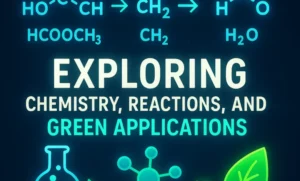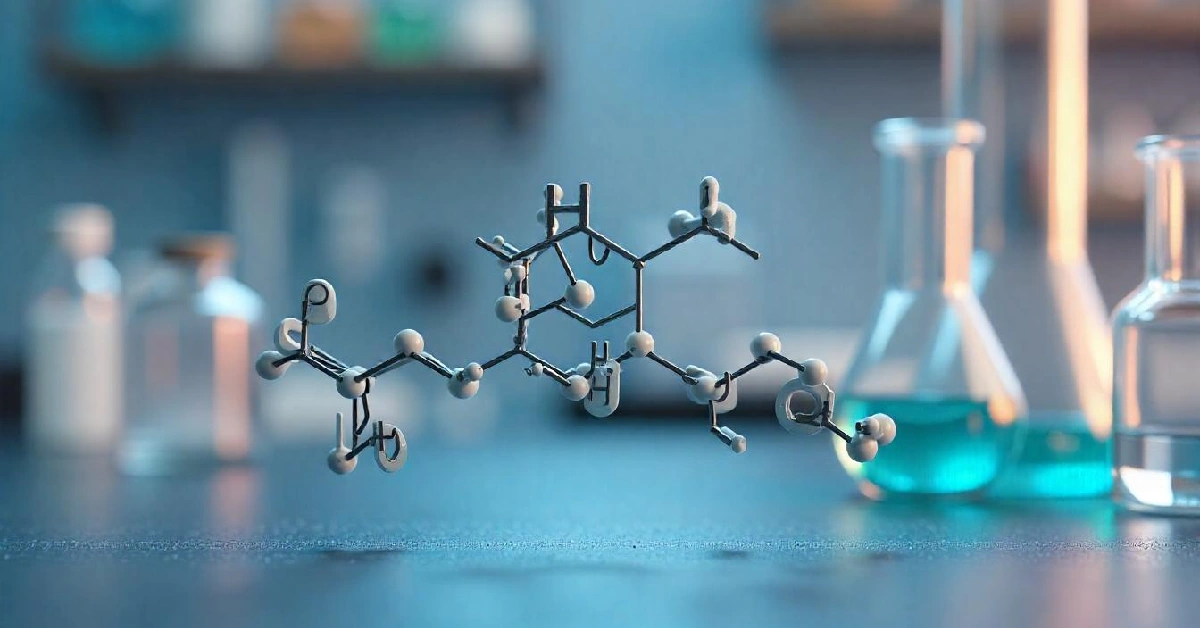The reaction between methyl formate (HCOOCH CH₂ H₂O) and water (H₂O) is a textbook example of a hydrolysis reaction — a process where water breaks chemical bonds. The hydrolysis of methyl formate is not just a fundamental concept in organic chemistry; it’s also a key industrial reaction with a wide range of applications. In this article, we’ll explore the chemistry behind the reaction of HCOOCH₃ with H₂O, the step-by-step mechanism, and how it plays a crucial role in manufacturing, chemical synthesis, and environmental systems.
What Is Methyl Formate HCOOCH CH₂ H₂O?
Methyl formate (HCOOCH₃) is the simplest ester of formic acid. It appears as a colorless, highly flammable liquid with a pleasant, ether-like odor. It is widely used in the production of formic acid, formamides, and in various solvent applications. Its molecular formula, HCOOCH CH₂ H₂O, reveals it is composed of a formyl group (HCO) and a methyl group (CH₃) connected through an ester bond.
Hydrolysis of Methyl Formate: The Basics
When methyl formate reacts with water, the ester bond is cleaved through hydrolysis, yielding two main products: methanol (CH₃OH) and formic acid (HCOOCH CH₂ H₂O). This reaction can be catalyzed by acids or bases to speed up the process. The overall balanced chemical equation is:
HCOOCH₃ + H₂O → HCOOH + CH₃OH
In simple terms, water breaks the ester bond, replacing the methyl group with a hydroxyl group (-OH), forming an alcohol and a carboxylic acid.
The Reaction Mechanism: Step by Step HCOOCH CH₂ H₂O

Let’s delve into the acid-catalyzed hydrolysis mechanism of methyl formate, which is commonly studied in organic chemistry:
-
Protonation of the Carbonyl Oxygen:
In the presence of an acid catalyst (like H⁺), the carbonyl oxygen of the ester group becomes protonated, increasing the electrophilicity of the carbon atom. -
Nucleophilic Attack by Water:
Water acts as a nucleophile and attacks the carbonyl carbon, forming a tetrahedral intermediate. -
Proton Transfer:
A proton transfer occurs within the intermediate to prepare it for bond cleavage. -
Breakage of the Ester Bond:
The C-O bond between the carbonyl carbon and the methoxy group (-OCH₃) breaks, leading to the formation of methanol and a protonated formic acid. -
Deprotonation:
The final step is the deprotonation of the formic acid to yield the neutral molecules.
This mechanism can also occur under basic conditions, where hydroxide ions directly attack the carbonyl carbon, but the steps and intermediates differ slightly.
Industrial Applications of Methyl Formate Hydrolysis
The hydrolysis of methyl formate is not just a lab experiment; it has important industrial implications:
-
Formic Acid Production:
The most significant application of this reaction is in the production of formic acid, a valuable chemical used in leather processing, preservatives, and de-icing solutions. -
Methanol Recovery:
Methanol, a by-product, is another crucial industrial chemical, used as a solvent, fuel additive, and feedstock in chemical synthesis. -
Formamide Synthesis:
Methyl formate is a key intermediate in making formamides, which are used in plastics and pharmaceuticals. Hydrolysis is often a part of the production cycle, ensuring no unreacted ester remains. -
Chemical Recycling and Waste Treatment:
This reaction is leveraged to break down methyl formate in waste streams or expired chemicals, making it easier to treat and neutralize hazardous waste. -
Fuel Cell Technology:
In direct formic acid fuel cells (DFAFCs), understanding the breakdown of methyl formate is essential, as it can influence fuel purity and cell efficiency.
Environmental and Safety Considerations
Methyl formate and its hydrolysis products are generally considered less hazardous compared to other industrial esters. However, safety precautions are still necessary:
-
Flammability: Methyl formate is highly flammable. Proper storage and handling are essential.
-
Toxicity: Inhalation of vapors or direct skin contact should be avoided. Both methanol and formic acid can pose health risks at high concentrations.
-
Biodegradability: The hydrolysis products are more biodegradable and environmentally friendly than the parent ester, making this reaction a helpful tool in green chemistry.
Why Understanding HCOOCH CH₂ H₂O + H₂O Matters
The hydrolysis of methyl formate is a small but vital example of how a simple reaction can have wide-ranging implications. From classrooms to factories, understanding how HCOOCH CH₂ H₂O reacts with H₂O not only deepens our grasp of organic chemistry but also empowers innovation across industries.
Whether you’re a student exploring organic mechanisms or a chemical engineer optimizing production processes, this reaction provides a clear view into the power of hydrolysis in transforming molecules — and our world.
Conclusion
The hydrolysis of methyl formate (HCOOCH CH₂ H₂O) with water (H₂O) is a fascinating and practical chemical process. With a clear reaction mechanism and diverse industrial applications, it serves as a shining example of how chemistry bridges theory and utility. From producing essential chemicals to supporting green technologies, this reaction is a key player in both science and industry.



